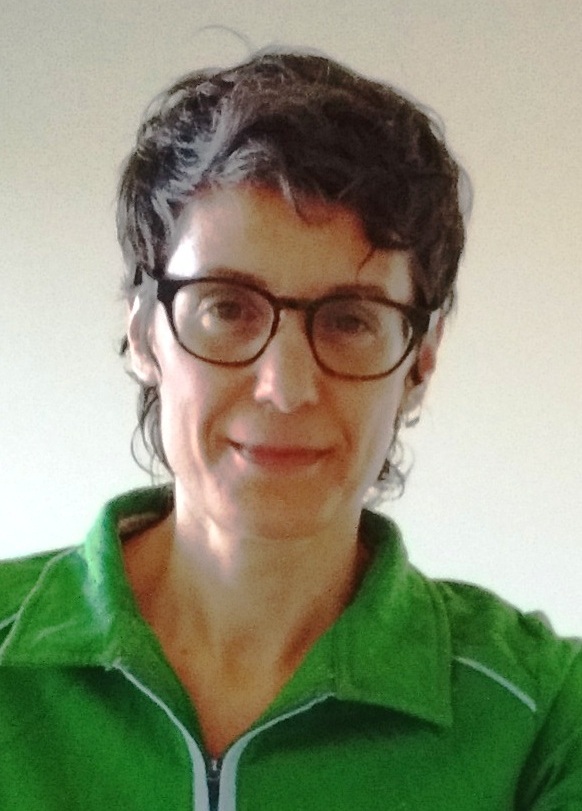Instructor Profile: Noa Yaari
How U of T instructors are incorporating generative AI into their teaching

Noa Yaari, Communication Instructor, Institute for Studies in Transdisciplinary Engineering Education and Practice (ISTEP), Faculty of Applied Science & Engineering, UTSG
Course details
Title and code: HIS393 Digital History F 2023
Number of students: 35
Online/in-person/hybrid: Online
Noa Yaari is an artist, entrepreneur, and Communication Instructor at the Institute for Studies in Transdisciplinary Engineering Education and Practice (ISTEP). She creates innovative teaching methods by combining her artistic and research skills, and multimodality expertise. In Winter and Fall 2023, she taught the course Digital History at the Department of History, where she encouraged students to use text-to-image AI tools. For example, students used AI to design a logo for their envisioned startup as part of the Business Model assessment, which offers a digital solution to a problem in creating and mobilizing historical knowledge. Delving into Experiential Learning, she is currently working on an interactive art installation utilizing Copilot Designer (text-to-image) at the University of Toronto’s Myhal Centre.
Q: How do you encourage students to explore the creative applications of generative AI?
A: I have encouraged students to use GenAI text-to-image in assessments and class exercises where image creation is central to the learning experience. I always ask students to visualize concepts and ideas and often bring art supplies to my classes to do so. The possibility of creating images with GenAI solves some of the challenges entailed in manual drawing in non-artistic classes. One of them is the ability to refine the image through better prompting instead of manually correcting the drawing. The exploratory process in this kind of visual creativity develops the creators’ visual literacy and raises their awareness of both the language they use and the algorithm they talk with.
Q: What have you learned from your students’ work with generative AI?
A: For a Business Model assessment, students identified a problem in the intersection of history and digital applications, offered a solution, and modelled a startup to develop it. The range of problems and solutions is fascinating, addressing research, education, sport, food, fashion, tourism, and more. Students also designed a logo for their startup. Hanne Gilbert Sandoval (Sofi) reflects on her Business Model, including the use of GenAI, in a brilliant 3-minute video she created for the final assessment in the course, the ePortfolio. As Sofi explains in the video, using text-to-image tools enabled her to move faster and more accurately toward communicating her vision, and eventually, ponder the potential new technology brings to History. By using GenAI in my teaching, I have rethought “creativity.” I also appreciate the students’ examination of new disruptive technologies with me and with each other.
Q: Have you collaborated with other educators or researchers to integrate generative AI into learning and art?
A: My art installation, which is in its initial stage, is an initiative to deliberately collaborate with art, engineering, operational, and IT professionals. Thus far, the conversations I have had about the project have been invaluable to my insights into GenAI’s impact on education and professional training. Once the project is on, I am eager to discuss and further develop it with students and other community members. As we are experiencing a revolutionary time, having multiple ways to think about and thrive in it is of prime importance.
Q: What ethical considerations guide your use of generative AI in the classroom?
A: In the Digital History course, I gave a class titled Errors, Typos, and Deepfake, where we explored how casual mistakes and intentional disinformation influence the production of historical knowledge. This class evoked emotional reactions and thought-provoking comments among the students, and it influenced their creative coursework. It also strengthened my conviction of the need to train History students to solve real-world problems while confidently applying an entrepreneurial mindset. I discussed the class in June at Congress 2024, in Montreal; you can see the slides, including students’ work. As deepfake results in a global concern – and the robotics industry is growing – I am committed to creating a safe space to ask questions and exchange ideas about these developments and other ethical and economic implications of GenAI. Moreover, I am committed to providing the students with practical opportunities to ensure we are on the right path, technologically and societally.
There are a growing number of generative AI tools available and the capabilities of these tools is evolving at a rapid rate. Currently, Microsoft Copilot is the recommended generative AI tool to use at U of T. When a user signs in using University credentials, Microsoft Copilot conforms to U of T’s privacy and security standards (i.e., does not share any data with Microsoft or any other company). In addition, Contact North AI Tutor Pro and Contact North AI Teacher’s Assistant Pro conform to U of T’s privacy and security standards. Please be aware that any other generative AI tool used within a U of T course or organization that has not been vetted for privacy or copyright concerns should be used with caution. If you would like to learn more about the tools available in U of T’s academic toolbox, please visit ARC’s New Tools.